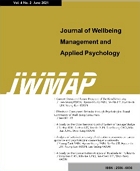 E-ISSN : 2586-6036
E-ISSN : 2586-6036
Vol.5 No.3
Abstract
Purpose: The purpose of this study is to investigate whether wetland has antimicrobial activity on pathogenic bacteria in the toilet bowl. Research design, data and methodology: Air-dried mud obtained from "Jilmoe Bog" wetland was packed and dissolved in the autoclaved saline. Antimicrobial susceptibility was assessed against three Gram-negative bacteria using disk diffusion method and broth dilution method. Identification of specific bacterium presented in wetland supernatant was performed using matrix-assisted laser desorption/ionization time-of-flight mass spectrometry. Results: Incubation of three Gram-negative bacteria with wetland supernatant inhibited bacterial growth of the bacteria, otherwise increased prevalence of specific bacterium. It was confirmed that Pseudomonas putida was presented in wetland supernatant. Conclusions: The results presented in this study might provide the possibility to utilize wetland supernatant as a bioremediation of toilet bowl bacteria.
Abstract
Purpose: With the introduction of Web 2.0, the advent of smartphones, and the recent outbreak of COVID-19 worldwide, interest in online shopping has soared. In an online shopping environment, the desire for impulse buying increases compared to offline shopping. Research design, data and methodology: In this study, three marketing stimulating factors such as product factor, price factor, and facilitating factor were selected which affect impulse buying for clothing and accessory products in the Korean online shopping environment. The mechanism of causal relationship among them, and the role customer value between marketing stimulating factor and impulse buying was analyzed. Results: The analysis results are as follows. First, the product factor had a significant positive effect on consumer value and impulse buying. Second, the price factor also had a significant positive effect on consumer value and impulse buying. Conclusions: Although the facilitating factor had no significant influence on consumer value and impulse buying, the indirect effect through consumer value was positively significant. Consumer value had a positive mediating effect on impulse purchase in the order of price factor, product factor, and promotion factor.
Abstract
Purpose: As interest in odor increases, odor complaints are also rapidly increasing. Traditional markets are not included in malodor control areas and are not easy to manage, so measure the odor substances generated in traditional markets and analyze the cause of high concentration points. Research design, data and methodology: The average value was presented by continuously measuring the combined odor, TVOC, hydrogen sulfide, and ammonia for 5 minutes at 100m intervals in Joong-ang traditional market, Jayu traditional market, Doraemi traditional market, and Sundae Alley in Wonju, Gangwon-do. In each market, up to the third highest concentration point for each measurement item was marked and analyzed. Results: The Joong-ang traditional market, Doraemi traditional market, and Sundae Alley had high readings at the intersection. The Jayu traditional market had high measurements around restaurants and clothing stores. In addition, the concentration of complex malodors was also high at the points where the hydrogen sulfide concentration was measured. Conclusions: Odor generated in traditional markets is an important indicator for merchants and consumers. Therefore, in future studies, analysis that can supplement the limitations of measurement data and seasonal effects is needed.
Abstract
Purpose: In this study, pollutants generated in industrial areas were measured using a Portable Air Quality Measurement System(PAQMS). This study intends to examine in detail improvement measures and operational capabilities to operate a more efficient PAQMS. Research design, data and methodology: This study compares and analyzes the measurement values of the PAQMS and the measurement values of the national air quality measurement network. It is intended to develop a PAQMS corresponding to the data of the national measurement network by minimizing the errors that occur during comparative measurement and analysis and supplementing and improving the problems that occur during the current equipment calibration. Results: A PAQMS is an essential equipment for faster and more accurate measurement and analysis of pollutants in case of untimely measurement and civil complaints due to Micro Climate(local weather and environmental influences). Currently, there are many atmospheric measurement equipment in Korea, but only equipment for each item is produced and sold. Currently, these devices on the market must satisfy various conditions such as stable power, temperature, and humidity to calculate accurate measurement values. Conclusions: Therefore, there is no equipment that satisfies the conditions for performing detailed measurement in the field where accurate measurement is required. In this study, these field work conditions and contents for stable measurement were mentioned in the text.
Abstract
Purpose: This study aims to study the perception of merchants and customers about the odor problem of traditional markets in Wonju, Gangwon-do. Research design, data and methodology: A survey was conducted to investigate the perception. The survey consisted of 11 questions for merchants and 12 questions for customers. Results: In a survey of merchants - The question 'What kind of smell did you smell at the traditional market?' was investigated with multiple responses. Regarding the odor experience, unclean odor was the highest with 105 votes (36%), followed by rotting odor with 82 votes (28.1%) and other odors with 44 votes (15.1%). In a survey of customers - The question 'What kind of smell did you smell at the traditional market?' was investigated with multiple responses. As a result of the survey, filthy smell was the highest with 98 votes (43.2%). Next, rotten smell was found with 60 votes (26.4%) and others with 31 votes (13.7%). Conclusions: If the odor problem in the traditional market is solved, the economic and health damage to the merchants will be reduced. Further, it will help to revitalize traditional markets by increasing customer visits. As a solution, it is judged that it is good to study the direction of the establishment of a real-time monitoring system and the preparation and application of odor removal measures.













